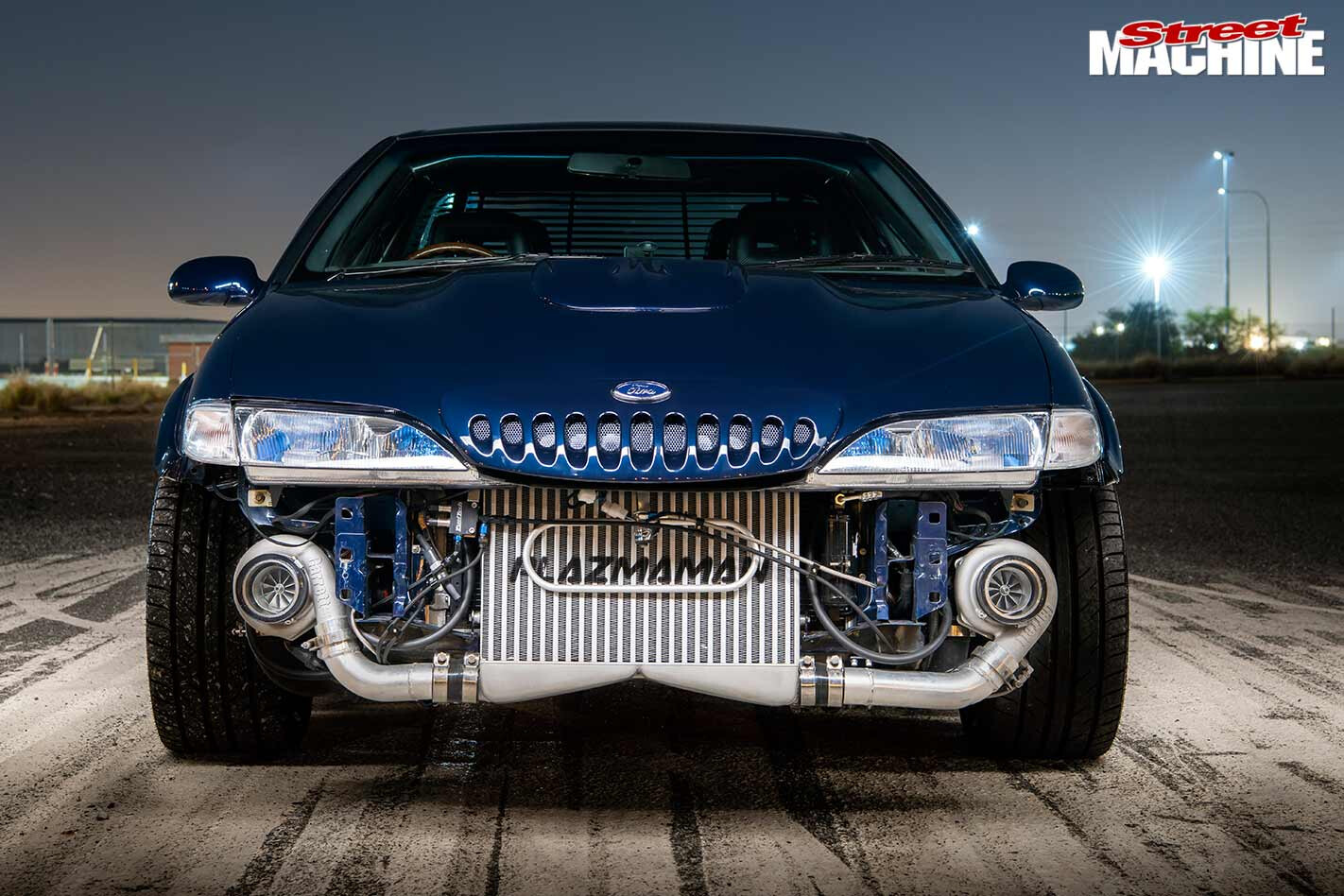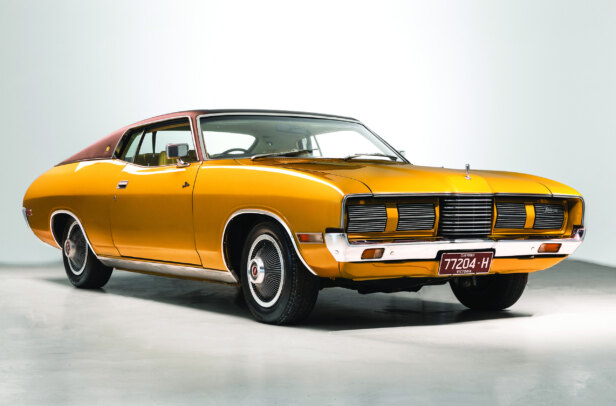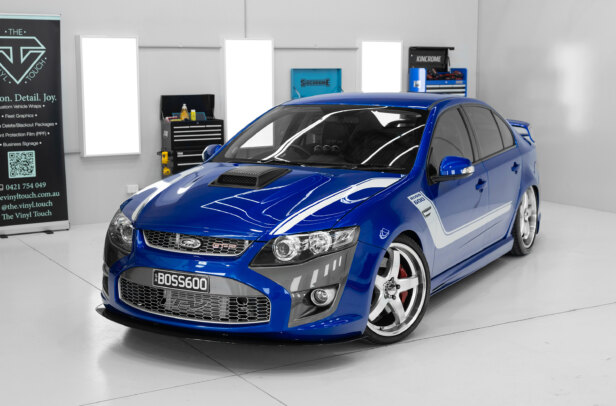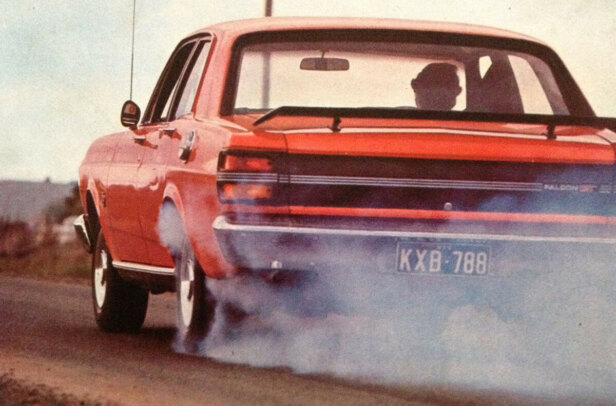IT’S easy to forget a time when Ford and GM-H were throwing everything but the kitchen sink at engines to make them pump out just over 200kW. For Blue Oval fans back in 1997, the EL Falcon GT was as good as it got, with the trusty five-litre Windsor tickled up by Tickford to reach the mark, while the leaning lion fans could sit back and smirk as their stroker 5.7-litre Holden punched out 215kW. These days my wife’s Kluger is rated at 220kW – I believe that’s what they call progress.
This article was first published in the June 2020 issue of Street Machine
Dale Parker’s EL GT has also been a beneficiary of technological progress, with its power output now around six times what it left the factory with. It’s been a slow progression with lots of development along the way – and by development, I mean breaking and blowing stuff up until pretty much everything has been changed. All you restorers out there can sit back down; Dale has kept all of the original stuff, which is a good thing, as the EL GT is a pretty rare beast, with just 250 built for the Aussie market.
Dale bought his Navy Blue version back in 2002. “People look at them as the ugly duckling of the family; you either like them or you don’t,” he says. “I was part of the Tickford Club because I had an XR6, but I sold that and bought a family car – a Ford Explorer. I went into a Ford dealer to buy a T-shirt and they had a GT for sale, so while I was waiting to pick up my T-shirt I went and changed over cars and went home with a GT. I never even got the T-shirt!”
As you can imagine, the wife was absolutely stoked with the new purchase, especially since they’d just started a family. “It didn’t go down well for a while,” Dale admits, but he also says that he’d get divorced if he ever sold the car. I guess they worked out their differences eventually.

The twin-turbo installation is neatly tucked away behind the front bumper. The Plazmaman intercooler gets some extra cooling from a CO2 spray bar that kicks in when the boost gets over 10psi
It wasn’t long before Dale started tinkering and modifying the car in search of more performance, but he was limited by the technology of the day. “Back then, because of the factory ECU, you couldn’t get much out of a head-and-cam package, so I got a Vortech S-Trim blower and it went from 200hp to 400hp [at the tyres],” he says. “I wanted a bit more, so then it went from 400 to 550. Then I put a bigger supercharger on and it went to 650, and it jumped right up when I put the big V-7 YSi on. At that stage it was supposed to be the be-all and end-all. That was the time when [Sean Fardell’s VK Commodore] MRHDT was running one.”
Even though he’s Ford man, Dale’s not ashamed to admit that he was inspired by both MRHDT and another Holden legend, Craig Munro’s TRYHRD VX II ClubSport. “They were standard-looking cars with standard interiors, a good stance, and they looked like true muscle cars but with massive amounts of horsepower. They were a huge influence on me.”
When you look at how Dale’s car turned out, it definitely meets all of the aforementioned criteria. It looks like a near-stock EL GT. Sure, they never came out with 18×9.5 and 18×11 rims, but thanks to the factory flare kit, they fit under the car with no problems at all. Truth be told, they’re actually more understated than the standard rims, which was precisely the look Dale was after.

While the easy option would have been to fit a reverse cowl, Dale chose to mould in the bonnet bulge from an FG Falcon V8 and top it with the standard EL GT bonnet vent
But this car’s all about the power hidden under that unassuming exterior, and that journey saw quite a few ups and downs, as Dale tested – and exceeded – the limits of the car’s driveline and, eventually, engine: “The car made just under 900hp at the tyres at 25psi on E85, but we had a massive intake restriction with the supercharger, because I had a water-to-air intercooler on it and you just couldn’t get the airflow through the core,” he explains.
“It was making reasonable power for what it had, and it was reliable – until I started to race it. In the end, the output turbine shaft snapped off and went through the supercharger, bonnet and front guard. My only saving grace was that because I had the intercooler on it, all the big bits of metal ended up in the plenum. It literally sheared the whole back of the supercharger off; they’re spinning at 75,000rpm at wide-open throttle.”
By this stage, everything else had been tested to destruction, so the car was already running a Reid-case Powerglide and a 35-spline nine-inch. “I literally broke everything in the process to get up there in my hunt for horsepower,” Dale says. “I changed everything from the bellhousing back to not break, and then I broke the supercharger. So it just went from breaking everything behind the engine, fixing that, and then breaking everything at the front of the engine!”
Dale was straight on the phone to engine builder Sandro Principe from SCM Race Engines. “I called Sandro from the track and told him the supercharger let go and went through the bonnet. Because he’d done so much work on the building of the engine, he said: ‘That’s it! I’ve had enough! I’m not doing any more work on your car until you put a turbo on it.’”
The only part of the car Dale had to modify was the radiator support panel to get the inlet pipe through, which feeds into the BBK twin 65mm throttlebody. The Dart Iron Eagle 8.2-deck block measures up at 357ci and is topped with Trick Flow heads
Sandro wanted to fit a big single turbo, but Dale wasn’t keen on that idea because of the lack of room in the engine bay, so he suggested a twin-turbo set-up. “Simon Travaglini from AllFast Torque Converters arranged the Garrett GTX3584RS Gen 2 turbos, which were the first ones in WA,” he says. These were perfectly suited to the task; they create a lot of boost for their size and are 75 per cent efficient up to about 35psi. They’re also small enough to be hidden behind the bumper yet large enough to deliver the air volume the engine needs.
The GTX3584RS Gen 2 turbo was designed as an aftermarket replacement for Barra or Supra snails, and is capable of making 600-1000hp. With two of them, Dale’s got plenty of potential to make even more power!
Mounting the turbos low and out of the engine bay also meant Dale could keep all of the creature comforts such as the air conditioning and power steering. The only thing that needed to be moved was the oil filter; it’s now mounted remotely on the chassis rail.
The engine remains largely unchanged from its previous supercharged configuration, built around a Dart Iron Eagle 8.2-deck block, although Dale did swap out the rods for some Carrillo H-beams and the cam to a custom Marshall grind better suited to the turbo configuration. There’s a Callies Magnum stroker crank combined with a 30thou overbore to take the capacity out to 357ci from the standard 302ci. The pistons are RaceTec and the heads are Trick Flow Twisted Wedge soft-chamber items with a 205cc intake runner.
The boot isn’t quite as spacious as it used to be now that it’s got a 90L fuel cell, rollcage and a couple of CO2 bottles taking up space. The larger bottle is for the intercooler spray, while the silver bottle is for the boost controller
The boost travels through a Plazmaman Pro Series intercooler before hitting the BBK twin 65mm throttlebody mounted on the Hogan’s Racing sheet-metal intake. A FuelTech FT500 controls everything and has been set up with three levels of crazy: Certifiable, which gives you 830hp; Batshit, which bumps it up to 1009hp on 16psi and pump 98; and finally, Joker, which requires VP QM23 race fuel and takes the power up to 1219hp on 24psi.
The EL GT is based on a Fairmont and sports quite a few luxury items that Dale has kept in place. However, he’s also added an FT500 dash on the column, a couple of O2 gauges to the console and a B&M Magnum Pro Grip shifter
Dale admits he’s pissed off a few of the purists, but the end result is exactly what he was after. “I’ve achieved what I wanted by having it really not in-your-face, but as soon as you start the thing up, people come running to see where all the noise is coming from,” he says. “They’re all shaking their heads thinking: ‘We just walked past that and it didn’t look like anything special, but it sounds like a monster!’”
DALE & SAM PARKER
1997 EL FALCON GT
Paint: Navy Blue
DONK
Type: Dart Iron Eagle Windsor 357ci
Inlet: Hogan’s Racing sheet-metal
Injection: BBK twin 65mm throttlebody, eight 160lb injectors
ECU: FuelTech FT500
Turbos: Twin GTX3584RS Gen 2
Heads: Trick Flow Twisted Wedge, 205cc intake runner, soft chamber
Valves: 2.05in (in), 1.60in (ex)
Cam: Marshall custom
Pistons: RaceTec
Crank: Callies Magnum
Conrods: Carrillo H-beam
Radiator: Brown’s custom
Exhaust: 17/8in manifolds, 3in dump, 3.5in stainless system
Ignition: LS1 coils, MSD leads
SHIFT
’Box: Reid-case Powerglide, Dellow bellhousing
Converter: AllFast
Diff: 9in, Truetrac, 35-spline Moser axles, 3.7:1 gears
BENEATH
Front end: Standard
Shocks: Viking adjustable coil-overs (r)
Steering: Power-assisted
Brakes: 330mm discs, Tickford two-spot calipers (f & r)
ROLLING STOCK
Rims: Koya SF01 Burnt Bronze; 18×9.5 (f), 18×11 (r)
Rubber: Achilles ATR Sport 2; 255/35R18 (f), 305/30R18 (r)
THANKS
Sandro Principe at SCM Race Engines; Michael Buckley at Rotomotion and Nathaniel Ardern at FuelTech Australia for tuning; Leigh Fallon at Lethal Industries; Paul at Grgich Performance; Simon ‘Gonzo’ Travaglini at AllFast Torque Converters; VP Race Fuels




Comments